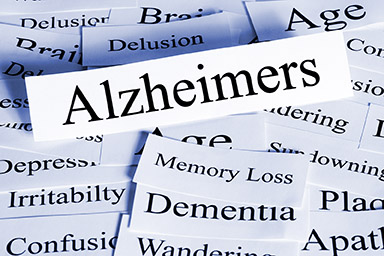Amyotrophic lateral sclerosis (ALS), also known as Lou Gehrig’s disease, is a devastating neurological disorder characterized by the progressive degeneration of the brain’s nerve cells. Over time, the illness leads to paralysis and robs patients of their mobility, as well as the ability to speak, eat, and breathe.
ALS is rare, affecting approximately 31,000 Americans, but the crushing toll it takes on families is immeasurable. Caring for a loved one as they succumb to ALS may feel unbearable, but know that you’re not alone. A number of resources, including care options like palliative and hospice care are available throughout the various stages of disease to ensure your loved one lives out their days with comfort, dignity, and respect.
Are you or a loved one living with a chronic or terminal illness?
The Sage Family of Companies is here to help.
Are you or a loved one living with achronic or terminal illness?
The Sage Family of Companies is here to help.
What is ALS?
ALS is a progressive neurological disorder that affects the motor neurons in the brain and spinal cord. The disease leads to the gradual loss of muscle control and voluntary movement. ALS is a progressive so symptoms worsen overtime. Eventually, patients lose the ability to speak, eat, and breathe.
The 7 Stages of ALS
While ALS can look different for everyone, understanding how the disease progresses is crucial in order to provide the best possible support for your loved one.
There’s no universal staging system for ALS, but a commonly used framework is the King’s clinical staging system, which assesses the spread of the disease based on the number of regions impacted. These regions include the bulbar nerves on the brain stem, the arms, and the legs. The King’s staging system also takes into account nutritional and respiratory failure.
Early Stage ALS
In the initial stage, symptoms of ALS tend to be very subtle and patients may observe changes in muscle function. These early ALS symptoms can vary but often include:
- Muscle weakness
- Twitching
- Cramping
- Stiff or tight muscles
- Trouble swallowing
- Breathing irregularities
During this stage, most people can still perform their usual daily activities, and symptoms may be attributed to other causes.
Diagnosis
The next stage of ALS is diagnosis. At this early stage of disease, symptoms tend to only affect one region of the body: the brain, arms, or legs. If symptoms begin in the arms or legs, this is referred to as limb-onset ALS. If the abilities to speak and swallow are affected, this is known as bulbar onset ALS.
There’s no single test to diagnose ALS, but health care providers may order the following:
- Neurological exam to check reflexes, muscle strength, and coordination for signs of the disease
- Electromyography (EMG), which measures electrical activity of muscle fibers
- Nerve conduction studies to assess the health of peripheral nerves and their ability to send signals to the muscles
- Magnetic resonance imaging (MRI), which can provide images of the brain and spinal cord
- Blood and urine tests to eliminate the presence of other diseases
Involvement of a Second Region
As ALS progresses, the disease spreads and affects other regions of the body. During this middle stage of ALS, muscle weakness intensifies and voluntary muscles may become paralyzed. Breathing can become very difficult as the lungs tend to be severely damaged.
In addition to worsening physical symptoms, mental and emotional health can also greatly suffer at this time. ALS doesn’t affect the mind so patients are very aware of their body’s deterioration. It’s a cruel reality of the disease and as a caregiver can be extremely difficult to watch your loved one go through. Through palliative care, the Sage Family of Companies offers a number of resources to provide both physical and mental support for your family during this challenging time.
Involvement of a Third Region
Eventually, ALS will affect the whole body, including the brain, the arms, and the legs. By this stage, symptoms become even more severe. Mobility often becomes severely restricted and your loved one may need assistance with personal care tasks like bathing and using the bathroom. Breathing troubles can intensify and the risk of respiratory failure increases.

Mandatory Gastronomy Stage
Eventually, ALS robs patients of their ability to swallow. This is caused by the paralysis of the mouth and throat which also takes away the ability to speak. During this stage, mandatory gastronomy is needed. The procedure involves surgically placing a feeding tube in your loved one’s stomach to ensure they receive proper nutrition and hydration.
Need for Respiratory Support
One of the final stages of ALS occurs when the individual can no longer breathe on their own and the use of a ventilator is required.
End-Stage ALS
While this final stage is not listed in the King’s staging system, it’s widely accepted that the last stage of ALS is the death stage. Most ALS patients die from respiratory failure, though other causes of death include cardiac issues and infections.
Life Expectancy With ALS
Research estimates suggest that approximately half of people with ALS will succumb to the disease within two to five years of symptom onset. However, this is an average and there are instances of individuals going on to live fulfilling lives for many years and even decades past diagnosis.
According to the ALS Association, around 10 percent of those affected by the condition go on to live a decade or more, with 5 percent achieving a remarkable survival rate of 20 years or beyond. A notable example is the renowned scientist Stephen Hawking, who defied the odds and endured for more than five decades following an ALS diagnosis in his early twenties.
Treatments for ALS
There’s currently no cure for ALS, but there are a number of treatment options that can help alleviate symptoms and potentially slow its progression. These include:
- Medications
- Physical therapy
- Speech therapy
- Nutritional counseling
- Occupational therapy
The Role of Palliative Care in ALS Treatment
Palliative care is a specialized form of healthcare which aims to enhance comfort and improve the quality of life for people living with chronic illnesses like ALS. With palliative care, your loved one continues treatments to slow ALS progression, while also benefiting from additional therapies and services to improve their physical, mental, emotional, and spiritual health.
Your loved one can avail of palliative care at any stage of ALS, and it’s often recommended at the time of diagnosis.
When it’s Time for Hospice Care
When it’s clear ALS is terminal and your loved one’s doctor estimates they have six months or less to live, it’s time to consider hospice care. When your loved one is admitted to hospice care for ALS, all treatments aimed at halting the advancement of the disease are stopped as care pivots to maximizing comfort as the end of life draws near.
This period can prove exceptionally challenging for both the patient and their family, and your hospice care team is specially trained to offer essential support during this delicate time. Alongside mental health counseling for patients, hospice services include grief counseling and access to support groups for family members. If desired, faith leaders are also available to offer spiritual guidance.
FAQ’s
Here are some frequently asked questions about the 7 stages of ALS.
Is ALS Always Fatal?
ALS is a terminal illness. However, there’s no way to predict the timing and circumstances of any patient’s death. Keep in mind that life expectancy statistics are averages and some people go on to live many years with the disease.
How Fast Do You Deteriorate With ALS?
ALS manifests at varying rates of progression and no two patients are alike. However, for the majority of people, it tends to advance rapidly, with half of patients reaching end-stages within two to five years.
Does ALS Ever Go into Remission?
While it’s possible for ALS symptoms to not worsen for a prolonged period of time, the disease is progressive and terminal, so it doesn’t go into remission.
How Do You Know the End is Near With ALS?
Patients with ALS typically experience complete paralysis of voluntary muscles when the end is near. This means they’ve lost the ability to speak, chew, drink, and move their bodies. Often, they’re unable to breathe on their own and require a ventilator.
Summary
ALS can take a devastating toll on both patients and their families. The Sage Family of Companies can help ensure your loved one’s comfort at every stage of disease with both palliative and hospice care services.
Your family’s dedicated team of specially trained experts includes doctors, nurses, counselors, clergy, and other healthcare specialists. With the Sage Family of Companies, your loved one will experience the comfort and dignity they deserve while navigating this difficult time.
References
- Amyotrophic lateral sclerosis CDC 2017
- Staging amyotrophic lateral sclerosis: a new focus on progression Elsevier 2018
- How Our Amyotrophic Lateral Sclerosis Patients Die European Respiratory Journal 2020
- Risk factors and emerging therapies in amyotrophic lateral sclerosis International Journal of Molecular Sciences 2019
- Stages of ALS ALS Association
- How Has Stephen Hawking Lived Past 70 With ALS? Scientific American 2012






